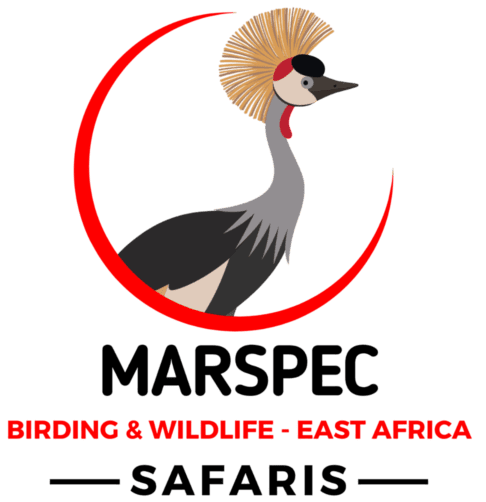16 Days Kenya Birding Tour
This unforgettable adventure explores Kenya’s top birdwatching hotspots, and we will focus more on rare, endemic, and hard-to-find birds. Beyond the incredible bird diversity, this journey offers breathtaking landscapes, thrilling encounters with Big Game, mouthwatering cuisine, and some of Africa’s most spectacular safari sceneries.
Whether you are a seasoned birder or a nature enthusiast, this tour promises an experience filled with wonder, discovery, and endless birdwatching opportunities.
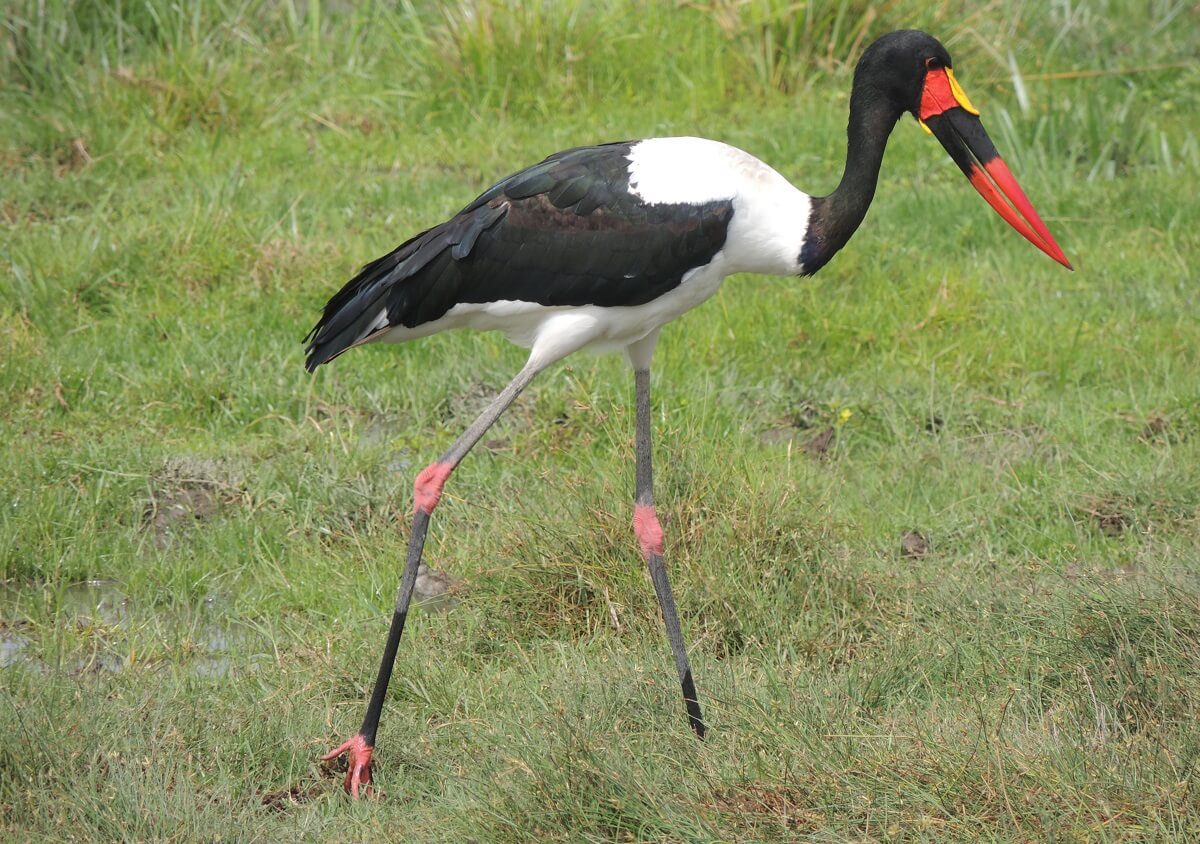
Day 1: Arrival in Nairobi
The Kenya birding tour starts by your arrival at Jomo Kenyatta International Airport (JKIA) in Nairobi, where our tour guide will welcome you and transfer you to your hotel. If you arrive early, you may have the opportunity to explore the renowned Nairobi National Park for an afternoon birding session. If you are feeling too tired, you can opt to have enough rest at your hotel and get energized for the following day.
Day 2: Birding at Nairobi National Park and Lake Naivasha
At the heart of Nairobi’s capital city is the Nairobi National Park, which is an Important Bird Area (IBA) with over 500 bird species. We will have an early morning birding session in the park, and we hope to get our bird list off to a good start. The park has varied habitats like river-line woodland, rolling grass plains, valley thickets and bushes, artificial dams and ponds, rocky gorges, and upland dry forests. Nairobi National Park is home to a range of threatened species and an array of large mammals and is also a Rhino sanctuary. After a full day of birding in this park in a city, you shall head to your accommodation in Naivasha.
Birds to spot at Nairobi National Park
- Secretary Bird (Sagittarius serpentarius)
- Martial Eagle (Polemaetus bellicosus)
- African Fish Eagle (Haliaeetus vocifer)
- Superb Starling (Lamprotornis superbus
- Hadada Ibis (Bostrychia hagedash)
- Lilac-breasted Roller (Coracias caudatus)
- Grey Crowned Crane (Balearica regulorum)
- Augur Buzzard (Buteo augur)
- White-bellied Bustard (Eupodotis senegalensis)
- Speckled Mousebird (Colius striatus)
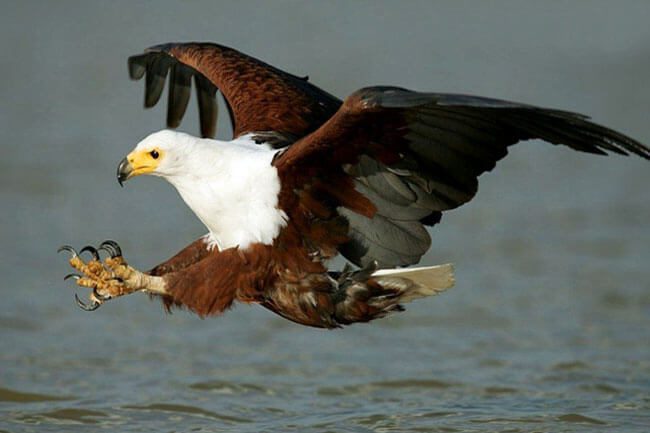
Day 3: Lake Naivasha, Kinangop Grasslandand Aberdare National Park
An early morning boat ride and a walk will start this day in Naivasha for another fun birding day. Common birds to spot at Lake Naivasha include African fish eagles, cormorants, kingfishers, pelicans, yellow and saddle-billed storks, hadada ibis, Great Egrets, and many more.
We will head to Kinangop Grasslands (another IBA), which lie on the Kinangop Plateau. A key highlight of this area is Kenya’s renowned grassland endemic, the Endangered (IUCN) Sharpe’s Longclaw. Additionally, a variety of widespread African grassland birds can be spotted, including the Black-winged Lapwing, Wing-snapping Cisticola, Long-tailed and Jackson’s Widowbirds, and the Nyanza Swift.
Once we are done with the lower Kinangop Grasslands, we will head to Aberdare National Park, which is a birder’s paradise with about 300 bird species recorded. Common birds in Aberdare National Park are the red-winged starling, Moorland chat, Jackson’s spurfowl, Hartlaub’s turaco, Baglafecht weaver, and the endemic Aberdare cisticola.
Accommodation for the night will be close to Mount Kenya.
Day 4: Birding at Mount Kenya
We shall have an early morning birding session at Mount Kenya. The forest is home to about 226 bird species, and 6 out of 8 bird species are endemic to the Kenyan mountains. Common birds to spot here include the elusive Scaly Francolin as well as the White-headed Barbet, Yellow-rumped Tinkerbird, Mountain Wagtail, and Black-throated Wattle-eye.
At the cooler bamboo forest, you are likely to spot specialties such as Red-fronted Parrot, Eastern Bronze-naped Pigeon, Hartlaub’s Turaco, Moustached Tinkerbird, Waller’s Starling, Sharpe’s Starling, Purple-throated Cuckoo-shrike, and African Paradise-Flycatcher.
Moving to higher elevations above 3000m, we shall spot species like Jackson’s Francolin, Abyssinian Ground-Thrush, Moorland Chat, and Kandt’s Waxbill. You are also likely to spot several eagle species soaring high above.
After a successful birding day at Mount Kenya, we shall spend the night there.
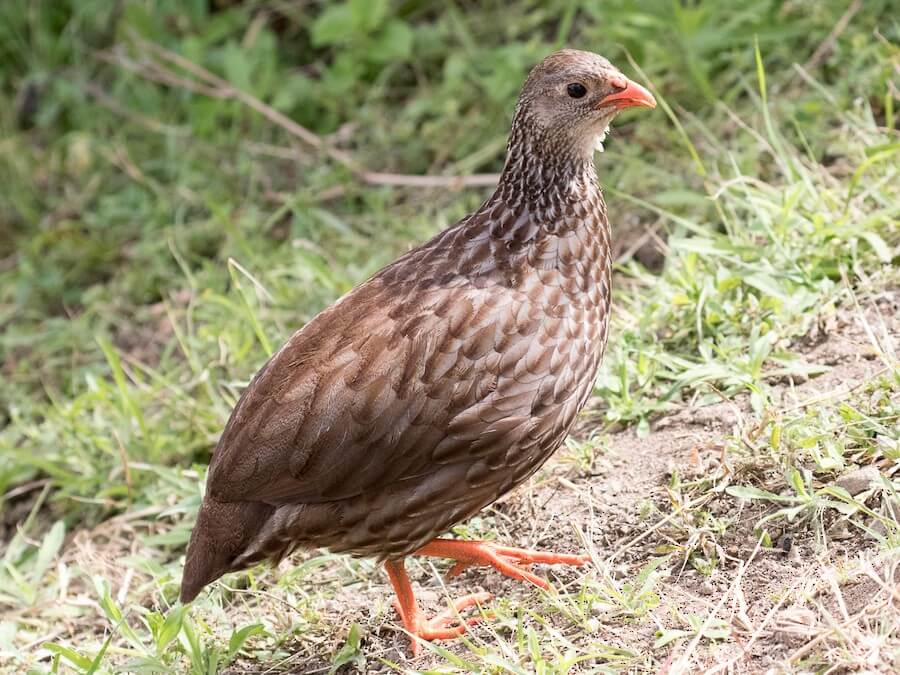
Day 5&6: Birding at Buffalo Springs & Samburu National Reserves
We shall have an early morning heading to Buffalo Springs and Samburu National Reserves, arriving in the afternoon. These two adjacent destinations have more than 390 bird species and are unique because they offer rewarding dry-country specials, which are here all the time.
Some unique birds to look for here include the Somali ostrich, Somali Bee Eater, vulturine guineafowl, Abyssinian ground hornbill and the unusual White-Backed, Hooded, Griffons, and Egyptian vulture. Other common birds to spot here are the black-capped social weaver, Black-faced sandgrouse, D’Arnaud’s barbet, and White-bellied bustard.
We will spend the two nights inside Samburu National Reserve.
Day 7: Lake Nakuru National Park
On day 7, we shall leave early in the morning from Samburu and head to the premium Lake Nakuru National Park which is a highlight on our Kenya birding tour. We shall spend the entire afternoon birding at the park. The park is renowned for its vibrant birdlife and is every birder’s dream destination. Apart from its large population of greater and lesser flamingoes that makes the lake shores turn pink, it’s a great place to spot the great white pelican, African fish eagle, Grey-headed Gull, purple heron, Long-tailed Cormorant, Egyptian Goose, Yellow-billed Stork, Hadada Ibis, Great Egret, Little Egret, Marabou Stork, African Spoonbill and many more.
We shall spend the night here at Nakuru.

Day 8: Lake Nakuru National Park & Lake Baringo
We shall start our day with a morning birding session at Lake Nakuru National Park until we exhaust all the birds we can in a day. Later in the afternoon, we will head to Lake Baringo, which is also a great opportunity to spot birds along the way.
We will spend the night at Baringo.
Day 9: Lake Baringo
Lake Baringo is home to over 470 bird species, and on a good day, over 100 species can be spotted. On this day, we will start birdwatching early in the morning, break for lunch and resume later in the afternoon.
Birdwatching at Lake Baringo is done by walking around the area surrounding the lake combined with a boat ride on the lake. Common birds to spot here include Senegal Thick-knee, Lichtenstein’s Sandgrouse, Three-banded Courser, African Skimmer, Standard-winged Nightjar, Northern Shoveler, Water Thick-knee, Greater Painted-snipe, African Jacana, Abdim’s Stork, White Stork, and many more.
After a successful day of birdwatching in Lake Baringo, we shall spend the night there.
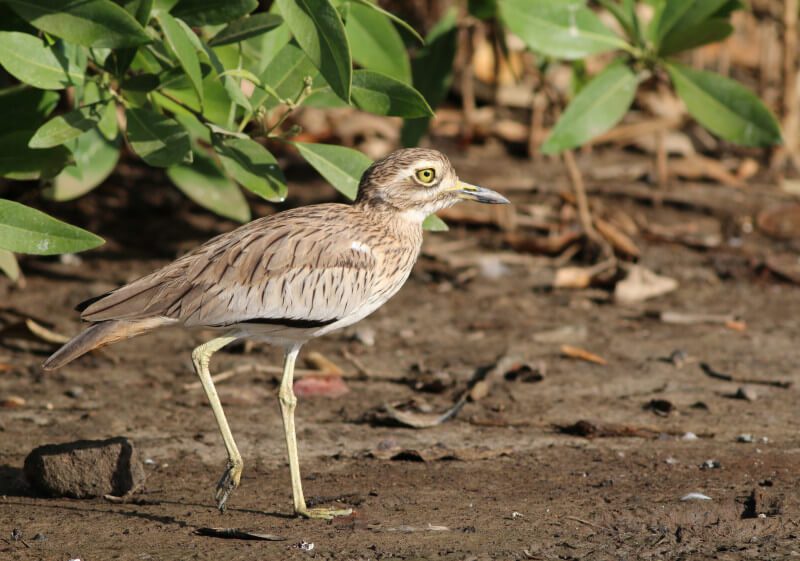
Day 10, 11, & 12: Birding at Kakamega Forest
We’ll start the day with an early morning bird walk at Lake Bogoria, making the most of the quiet hours before breakfast to spot some of the region’s species. Once we’ve eaten, we’ll set off on a scenic drive to Kakamega Forest, passing through the stunning landscapes of the Kerio Valley.
Along the way, we’ll take a break for a picnic lunch in the valley, where we’ll also have a chance to do some birdwatching. Here, we’ll be on the lookout for species like the White-crested Turaco, Beautiful Sunbird, Orange-breasted and Grey-headed Bushshrikes, and the striking White-crested Helmetshrike.
Kakamega Forest, the only true tropical rainforest in Kenya, is a unique ecosystem that closely resembles the lush forests of central and western Africa and is a key area in our Kenya birding tour. It’s home to a rich variety of birdlife, including several species found nowhere else in Kenya.
We’ll have the rest of the day to take in the sights and sounds of this special place. Tomorrow and the day after, we’ll dedicate a full day to exploring its rich birding opportunities. We shall explore the numerous forest trails in search of Kakamega’s 410 species checklist.
Among the highlights are the rare Turner’s Eremomela and Chapin’s Flycatcher, along with the striking White-headed Wood-hoopoe, Red-headed Malimbe, and the spectacular Great Blue Turaco.
Other common birds to spot include the western black-headed oriole, Crested guineafowl, Snowy-crowned robin-chat, Kakamega greenbul, Yellow-spotted barbet, Cinnamon-chested bee-eater, White-headed wood-hoopoe, Chubb’s Cisticola, and many more.
We shall spend the nights at Kakamega.
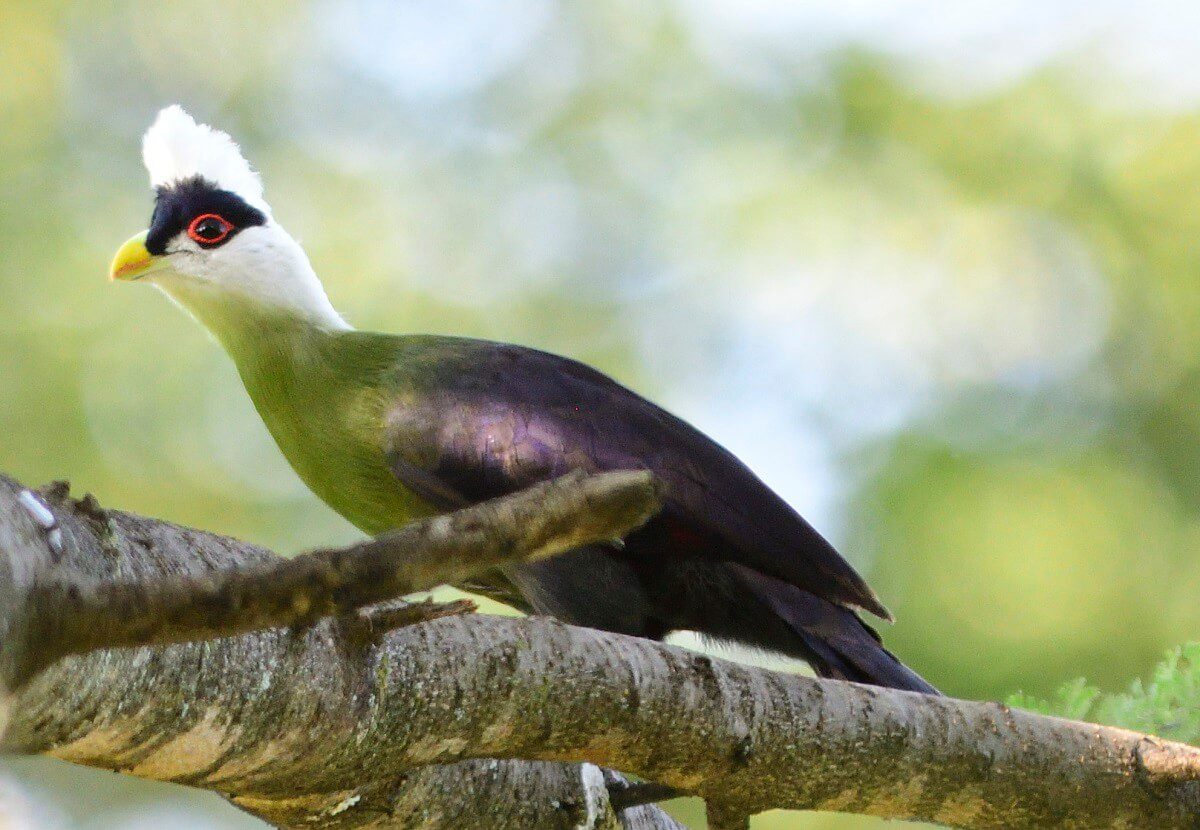
Day 13: Lake Victoria to Maasai Mara National Reserve
After exhausting all the birds, we could spot at Kakamega Forest, we will head to Lake Victoria and later to Maasai Mara National Reserve.
Lake Victoria is Africa’s largest freshwater lake and the second-largest in the world. It stretches across three East African countries: Kenya, Uganda, and Tanzania. The lake serves as the source of the mighty Nile River, which flows northward to Egypt.
The lush reed beds surrounding the lake create a haven for several papyrus-dwelling bird species, including the elusive Carruthers’s Cisticola, the vibrant Papyrus Gonolek, and the charming Papyrus Canary. Adding a splash of color to the scene, striking weaver birds like the Black-headed Weaver, the Northern Brown-throated Weaver, and the sleek, Slender-billed Weaver can also be spotted, busily weaving their intricate nests among the reeds. A boat ride on this vast lake will give us an opportunity to spot more bird species.
Later in the evening, we will head to Maasai Mara National Reserve and spend the night there.
Day 14 & 15: Maasai Mara National Reserve
These two days will be spent birding across the vast land of Maasai Mara National Reserve, and we will see how many of the 470 bird species recorded here we can tick off. The savanna grasslands, dense bushes, towering treetops, rivers, and vast skies offer a spectacular paradise for birdwatchers.
You can spot a variety of birds, including the Goliath Heron, Grey Heron, Black-headed Heron, and Great White Egret. The swamplands are home to groups of Yellow-Billed Storks, Sacred Ibis, and spectacular flocks of Crowned Cranes and Saddle-Billed Storks. Additionally, flocks of White Storks, Lilac Breasted Roller, Jaunty Crowned-Plovers, K ori Bustards, and Secretary Birds can also be seen.
Birds of prey like the martial eagle, Pygmy Falcon, and Bateleur steal the show here at Maasai Mara National Reserve.
The two nights will be spent here at Mara.
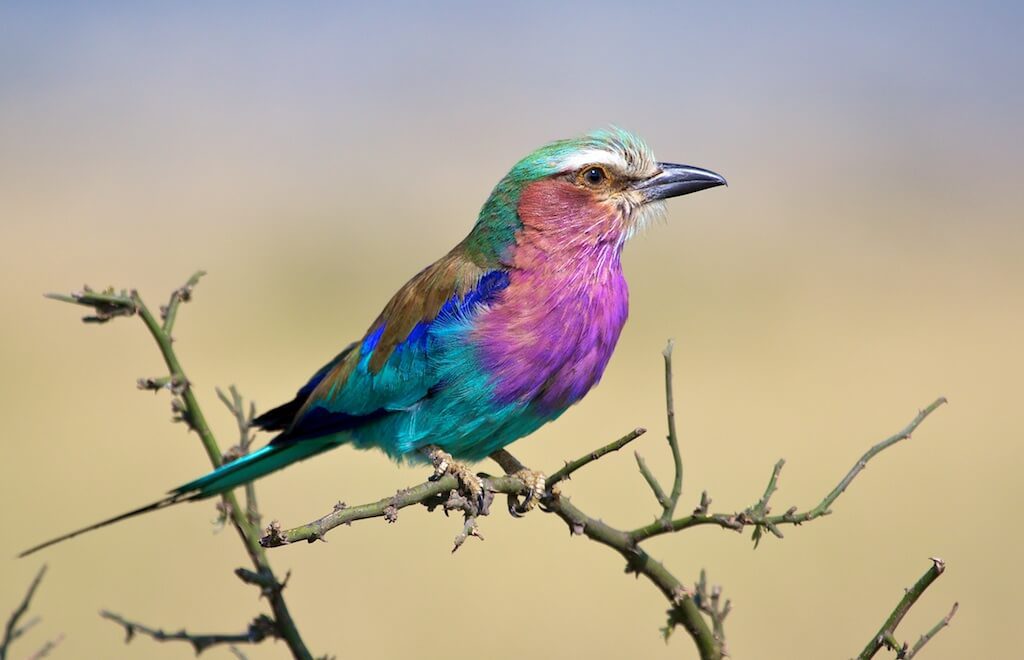
Day 16: Maasai Mara to Nairobi
On our last day, we shall have an early morning birding session at Maasai Mara and later head back to Nairobi. Depending on our time, we can make a few birdwatching stops along the way to end our 16-day birding tour in style.
Upon arriving in Nairobi, we shall head straight to the airport and warmly bid you goodbye, marking the end of our fantastic Kenya birding tour.
Other Wildlife Highlights
Besides the diverse birdlife in this travel plan, we expect to experience the big five: Leopards, Elephants, both Black and White Rhinos, Buffalos and Lions. The Samburu and Buffalo Spring National Reserves are home to the northern specials Gerenuk, Reticulated Giraffe, Beisa Orrys and Grevy’s Zebra. These, amongst others, are globally sort out for species and will complement our Kenya birding safari experience.
